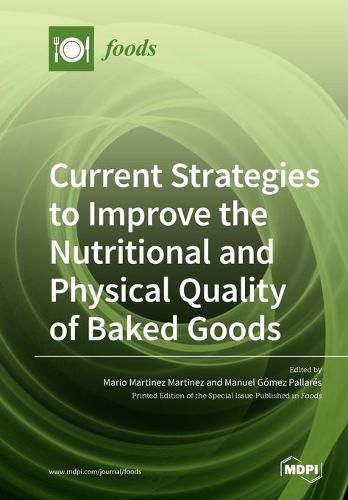Readings Newsletter
Become a Readings Member to make your shopping experience even easier.
Sign in or sign up for free!
You’re not far away from qualifying for FREE standard shipping within Australia
You’ve qualified for FREE standard shipping within Australia
The cart is loading…






This title is printed to order. This book may have been self-published. If so, we cannot guarantee the quality of the content. In the main most books will have gone through the editing process however some may not. We therefore suggest that you be aware of this before ordering this book. If in doubt check either the author or publisher’s details as we are unable to accept any returns unless they are faulty. Please contact us if you have any questions.
The lifestyle of humans is rapidly changing, and, correspondingly, their needs and the current and future megatrends of the food market. It is worth mentioning (1) the preference for natural, simple, and flexible diets that drive the further expansion of plant-focused formulations, (2) the focus on food sustainability (food waste reduction), and (3) the interest in healthy eating as the basis for good health. The hectic routine and rapid urbanization in developed and developing regions, respectively, have shifted consumer preferences toward bread and baked foods, which, interestingly, are often high in sugars and are categorized as having a high glycemic index. Therefore, it is of major importance to address the technological challenges of manufacturing baked goods with high physical and sensory quality that result in positive metabolic responses. This Special Issue seeks to provide fundamental understanding in this area and novel strategies to improve the nutritional properties of baked goods, including a decrease in starch bioaccessibility, sugar reduction, increase in fiber and/or protein content, and the improvement of phytochemical bioactivity. This Special Issue will also cover studies on the physical and sensory improvements of baked goods that may provide a mechanistic understanding to minimize the loss of quality after the incorporation of nutritional-improving ingredients, such as edible byproducts, proteins, or fibers. Last but not least, studies focused on the reduction of additives (clean label) or fat and on the use of sourdough to improve the sensory properties of baked goods will also be included.
$9.00 standard shipping within Australia
FREE standard shipping within Australia for orders over $100.00
Express & International shipping calculated at checkout
This title is printed to order. This book may have been self-published. If so, we cannot guarantee the quality of the content. In the main most books will have gone through the editing process however some may not. We therefore suggest that you be aware of this before ordering this book. If in doubt check either the author or publisher’s details as we are unable to accept any returns unless they are faulty. Please contact us if you have any questions.
The lifestyle of humans is rapidly changing, and, correspondingly, their needs and the current and future megatrends of the food market. It is worth mentioning (1) the preference for natural, simple, and flexible diets that drive the further expansion of plant-focused formulations, (2) the focus on food sustainability (food waste reduction), and (3) the interest in healthy eating as the basis for good health. The hectic routine and rapid urbanization in developed and developing regions, respectively, have shifted consumer preferences toward bread and baked foods, which, interestingly, are often high in sugars and are categorized as having a high glycemic index. Therefore, it is of major importance to address the technological challenges of manufacturing baked goods with high physical and sensory quality that result in positive metabolic responses. This Special Issue seeks to provide fundamental understanding in this area and novel strategies to improve the nutritional properties of baked goods, including a decrease in starch bioaccessibility, sugar reduction, increase in fiber and/or protein content, and the improvement of phytochemical bioactivity. This Special Issue will also cover studies on the physical and sensory improvements of baked goods that may provide a mechanistic understanding to minimize the loss of quality after the incorporation of nutritional-improving ingredients, such as edible byproducts, proteins, or fibers. Last but not least, studies focused on the reduction of additives (clean label) or fat and on the use of sourdough to improve the sensory properties of baked goods will also be included.